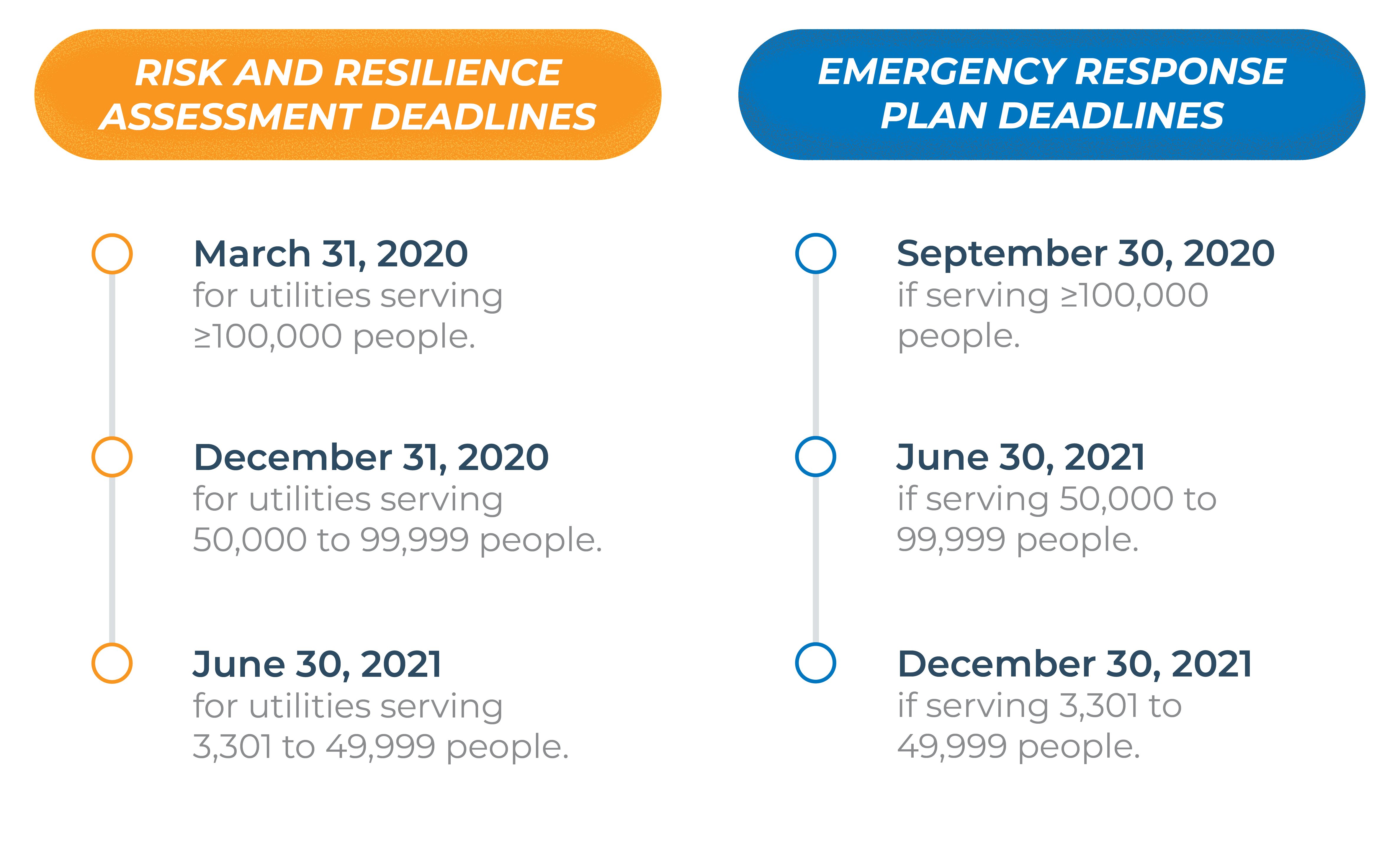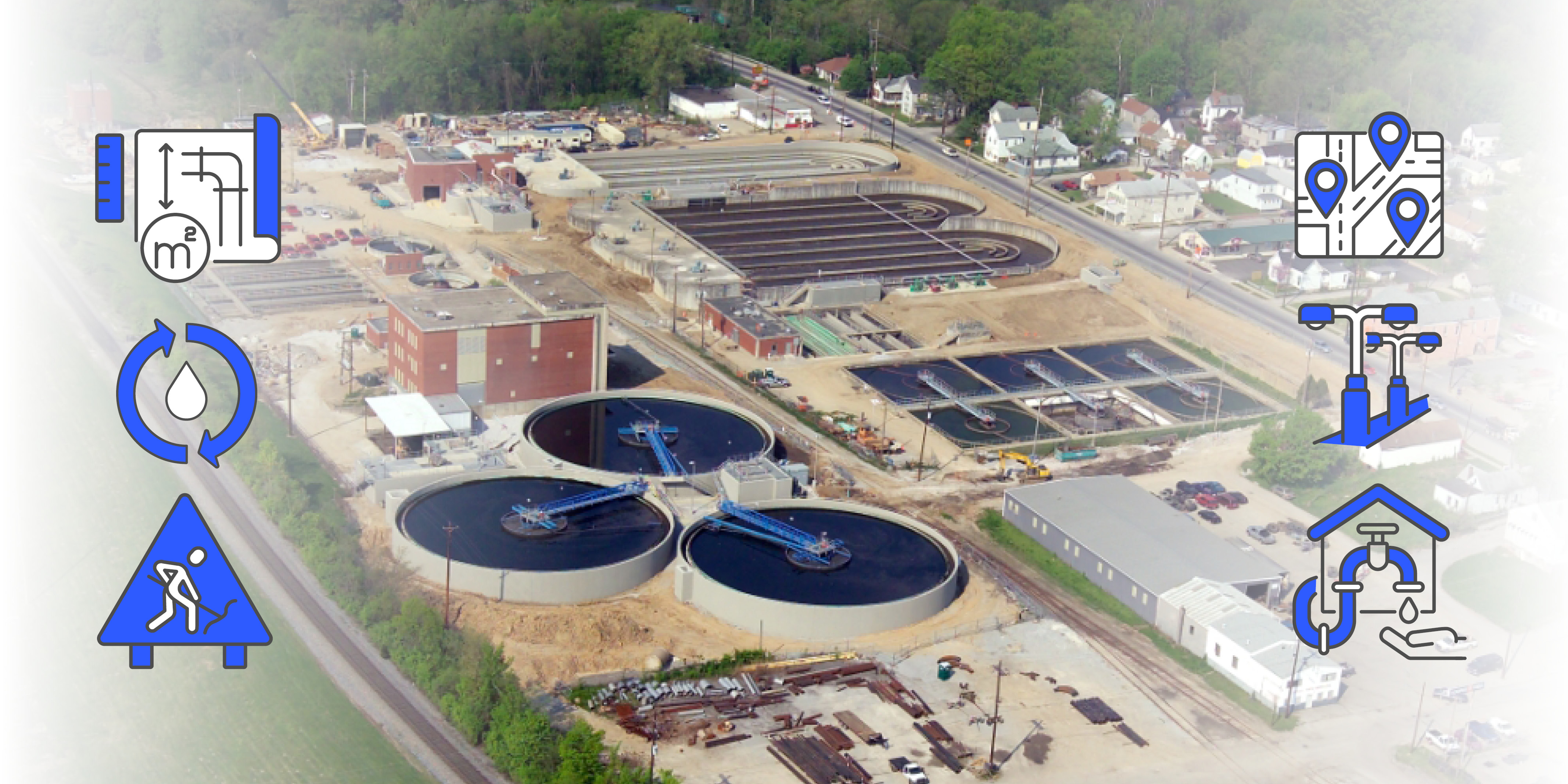In the aftermath of 9/11, the United States became keenly aware of the susceptibility of essential infrastructure and utility installations to both terrorist attacks and natural disasters, including its nearly 150,000 public water systems. Out of this extreme wake-up call to our nation’s vulnerability came the Bioterrorism Act of 2002, enacted to prevent, prepare for and respond to bioterrorism and other public health emergencies, with the goal of protecting, among other targets, America’s water supplies.
To further safeguard critical drinking water utilities, the American’s Water Infrastructure Act of 2018 (AWIA) was enacted, with new mandates for community water utilities, including Section 2013 which requires systems serving more than 3,300 people to complete a risk and resilience assessment and develop an emergency response plan.
Now that we’re past the history lesson, let’s get down to what you really want to know: what do I need to do, how much extra work will it entail, and when is my deadline? Let’s break it down:
What do I need to do?
You will need to figure out how your water utility would be affected by a number of different disaster scenarios, ranging from tornados to cyber-attacks to floods. And then, when you’ve determined how each disaster would affect the safety and availability of public drinking water, you need to address the “Resilience” portion of the Act by devising plans to keep the water safe and flowing. There are several tools to guide the development of the assessment and the AWWA J100-10 standard for Risk and Resilience Management of Water and Wastewater systems is the place to start.
How much work will this be?
Compliance with government mandates almost always require both time and effort, and this one is no different. Between the utility overview, development of emergency plans and procedures, creation of core and incident-specific responses, and, most importantly, establishing mitigation actions to better withstand and quickly recover from any disaster, there’s no getting around it: there’s a lot of work, and most of it is technical, forward-thinking, and engineering-focused. A major factor in the level of effort is the state of your emergency response plan. If your system has kept an up to date emergency response plan, you will have a good starting platform for developing the Risk and Resilience Assessment.
When is the deadline for this?
When assessments are due depends upon the size of the community served by the drinking water utility, with deadlines ranging from March 31, 2020 to June 30, 2021 (see below). For the resiliency “action plan” part of the mandate, each group will have six (6) months between the date of the assessment plan filing to provide the plan to the EPA.

For all the details: EPA Risk and Resilience Assessments and Emergency Response Plans
The need for crisis contingency planning has never been more apparent
Figuring out how to plan and survive disasters is not merely an intellectual exercise: if 2020 has taught us anything, it’s that calamity can strike from many different sources, with results that are far-reaching and difficult to anticipate. While in the past many would have viewed the necessity to create a “what-if” disaster game plan just another example of bureaucratic box-checking, creating contingency strategies now has new urgency and meaning. And while you could do the plan simply to avoid EPA penalties, including fines up to $57,000 a day fine for non-compliance, thoughtful administrators will create plans that lead their communities’ drinking water utilities through today’s crises, and for whatever tomorrow brings.
We’re here to help!
Clark Dietz has decades of experience working with water and wastewater utility clients, bringing to every project a deep understanding of the underlying processes for actual knowledge about how to plan for and mitigate crises – not just guess and hope for the best. We’ve helped our clients prepare their 2002 emergency plans, updated them throughout the years, and are ready to assist with the development of new resiliency plans to help keep your water system safe and in compliance. For more information on how Clark Dietz can help your utility develop a meaningful worst-case scenario plan that both adheres to EPA mandates and is useful in its own right, contact Andrea Bretl at 217.373.8933 or Andrea.Bretl@clarkdietz.com





